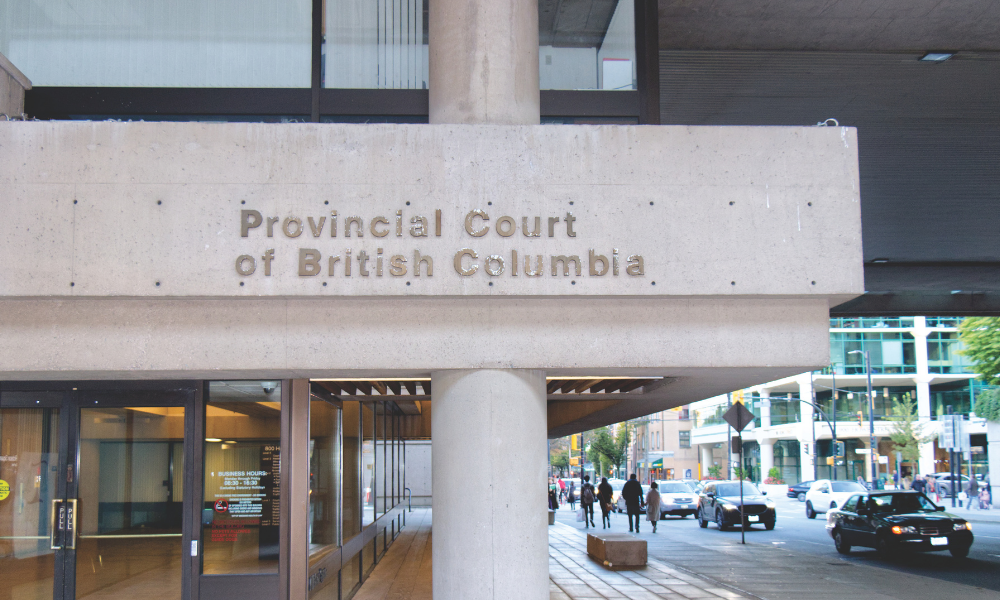
Latest annual report looks at trends over the council’s first 50 years

The duties of the B.C. Judicial Council were curtailed in 2020, but even with less activity, there was movement towards further diversity and inclusion, as outlined in the body’s annual report.
The council, a provincial body created 50 years ago to keep judges at arm’s length from government – and which also screens, interviews, and recommends candidates for appointment as judges – received only 30 applications in 2020, the report says.
Of those 30, plus eight other applications received the previous year, the council reviewed 19 applications and approved nine candidates for further interviews. Of the nine applicants interviewed, five were recommended as potential future Provincial Court judges.
The pool of candidates from which judges are chosen was about 25 this year, the report says, and ultimately, the provincial government chose six, four women and two men.
Since 1999, the council has conducted 596 interviews, and interviews on average 27 each year. However, “interviews were suspended for several months during 2020 COVID-19, resulting in an unusually low number” of interviews. Before 1999, the council interviewed all applicants but decided that year to add an application screening process.
Of the 30 applicants received in 2020, 16 offered “diversity factors” for consideration for a judicial appointment. Five identified themselves as Indigenous, eight identified themselves by visible minority or ethnic group, and six identified as diverse. Those numbers add up to more than 16 as some candidates identified themselves in more than one category.
Commenting on the report, Kate Feeney, Director of Litigation at West Coast LEAF (Legal Education and Action Fund) says the organization “views building an inclusive judiciary as a pressing societal objective, as courts gain both strength and legitimacy when judges reflect and share experiences with the communities they serve.
“The Judicial Council of British Columbia’s success in recommending more women applicants is just one step toward a truly inclusive judiciary. The Judicial Council—and every corner of the justice system—must continue the work of dismantling the systemic and structural barriers which exclude not only women lawyers, but Indigenous lawyers, racialized lawyers, 2SLGBTQIA+ lawyers, and other lawyers from underrepresented groups in the legal profession.”
Last year marked the council’s 50th anniversary, and the latest report provides highlights of its activities over that period, as well as an analysis of trends in the demographics of applicants for about the last 25 years (the period for which it has available data.)
In the last 25 years, the council has received a total of 1,318 applications for a judicial appointment, for an annual average of 51 applications.
Since 1995 the council has received 834 applications to be a Provincial Court judge from applicants who identify as male and 484 from applicants who identify as female. Over the past 25 years, the average number of judicial applications received per year is 32 from applicants who identify as male and 19 from applicants who identify as female.
The gap between male and female applicants is closing over time. Although female applicants make
up an increasing percentage of applications, the average number of female applicants per year has
been relatively consistent over time. What has happened, the report says, is that the number of male applicants has steadily increased.
The report does not explain why. Indeed, it says, “it would be interesting to know the reasons for this, and whether other courts have experienced similar trends.”
Since 1996, on average, four male applicants and three female applicants have been appointed as Provincial Court judges each year. On average, 61 per cent of Provincial Court judicial appointments have been male, and 39 per cent female. However, the average percentage of females appointed as a judge has increased over time, averaging around 46 per cent of appointments between 2006 and 2020, as opposed to 28 per cent of appointments between 1996 and 2005.
As for applicants’ experience working as lawyers, during the last 25 years, on average, 62 per cent of judicial applicants’ background was in private practice, 24 per cent as Crown counsel, and 14 per cent from other areas of legal practice. However, the percentage of applicants from private practice has declined over time, while the percentage of Crown counsel has increased. Again, the report gives no explanation as to why this might be happening.
The report also contains highlights from its first 50 years. These include:
The province eventually gave the council responsibility for screening candidates for appointment. In 1975, legislation was passed saying the provincial government could only appoint a judge if the Judicial Council recommended them. At the time, this was a unique practice in appointing provincial court judges in Canada.
The council’s other responsibilities include:
Four of the council’s nine members are appointed by the Lieutenant Governor in Council (the provincial Cabinet). Current appointees include people with policing, business, human resources, and court administration experience.
The other members, designated by the Provincial Court Act, are the Chief Judge, an Associate Chief Judge, the president of the Provincial Court Judges’ Association of B.C., and two lawyers - the presidents (or their nominees) of the Law Society of B.C. and the Canadian Bar Association, B.C. Branch.